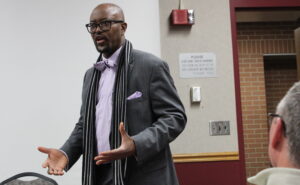As the Centers for Disease Control and Prevention guidelines lift and classes begin meeting in person, MCCC administrators are in the process of figuring out which modes of classes to offer.

“Scheduling is a puzzle,” said Vice President of Instruction Grace Yackee.
Fifty-six percent of classes offered for the Fall 2022 semester are in-person, 25% are asynchronous and 18% are blended, as of April 21, according to data gathered by Annette Kiebler, administrative assistant to the vice president of Instruction.
However, those numbers will likely change as more classes are released, Yackee said.
“We have a lot of courses we haven’t released yet,” Yackee said. “We really wanted to see what the response was going to be instead of putting everything out there and then having to cancel stuff.”
A survey released on March 31 indicated that 52% of surveyed students preferred a fully asynchronous online format over blended and in-person modalities. Fifteen percent of MCCC students responded to this survey.
Yackee said she is taking the survey into consideration while also seeing which classes students are actually enrolling in.
Instead of just looking at the numbers on the survey, Yackee said she also looks at the personal comments students made. Often, students mistake asynchronous classes for blended classes.
“I’m not sure students are thinking asynchronous when they think online,” said Yackee. “They’re thinking a little bit on the computer, in class, and virtual.”
Though MCCC President Kojo Quartey does not dictate what happens in the classroom, he still has input on the overall direction of the college.
“We are not an online institution,” Quartey said. “We’re focusing on trying to bring as many students back as possible. That’s my direction, to be clear.”
Deciding which classes to offer and in which formats involves consulting with the deans of each division, Yackee said. Often, they will keep releasing classes up to a week before the beginning of the semester.
Yackee said she and the division heads are slowly trying to find the middle ground between considering student demand, faculty feedback and learning outcomes.
“All the best practice literature tells you the more students are engaged and interacting on campus, the more successful they will be,” Yackee said.
Overall, Quartey and Yackee said they want to return to normal.
“We want to look like we did pre-pandemic,” Yackee said. “We find life in the life of the institution.”

